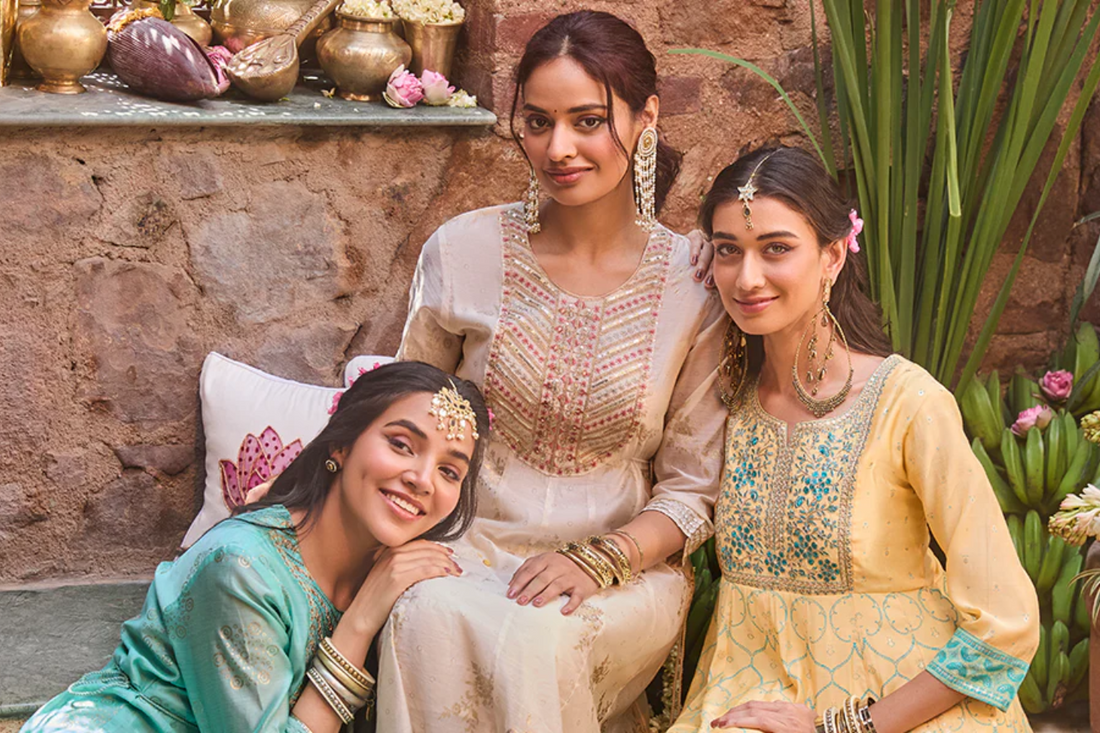
Mastering the Art of Embroidery in Indian Ethnic Fashion
The use of embroidery in Indian ethnic fashion is not merely a means of decoration, rather it is a type of storytelling, which is woven into fabric. In different areas, the methods include numerous variations, though in Punjab, such types of methods as phulkari and bagh are particularly renowned due to their floral motifs and bold patterns that turn plain cloth into something that can be worn. These styles were formed in rural communities by using silk threads to produce patterns which represent fertility and abundance and in many cases, they are handed down by the mother to the daughter as a treasured art.
The design starts with the choice of the foundation material, cotton to be worn on a daily basis and silk to be used on special occasions. Designs are either sketched by hand or on stencils, and then built up by the artist with layers of color and texture using needles. Phulkari, which translates to flower work, entails embroidering the whole piece with a lot of work whereas the light ones allow the material to breathe. The craft has a history of being practiced in Sikh empire where it was used in royal regalia and currently it has an impact in fashion trends all over the world.
Regional Variations and Techniques
Beyond Punjab, embroidery is distinguished. Mirror work is used in Gujarat to provide reflective glitter, which best suits festive cholis. The wool patterns on shawls are done in intricate vines using thread done on kashmiri crewel and it gives warmth and beauty. Both styles are the reflections of their environments, desert in Rajasthan, oceanic in the coastal regions. The only thing that is similar about them is the patience; it is possible that one piece may require weeks, and it represents the commitment to perfection.
The Fiza Boutique includes examples of how well these styles were preserved, giving a hint into the artistry that preserves traditions in the presence of contemporary needs.
Incorporating Embroidery into Everyday Style
Balance is important to those who incorporate embroidered objects in their everyday lives. A plain kurta can be worn with plain palazzos in a light form of embroidery, and with more heavy embroidery in the evening. Pattern blends, such as wearing phulkari in conjunction, are not cluttered but are interesting to see. It must be taken care of, the handwashing keeps the threads in order, and they last long.
With the current sustainability trend, most people are shifting towards embroidered ethnic clothing due to its longevity thus eliminating the use of fast fashion. This craft does not only beautify but also makes the wearers part of the cultural stories thereby making them appreciate the handmade beauty.

